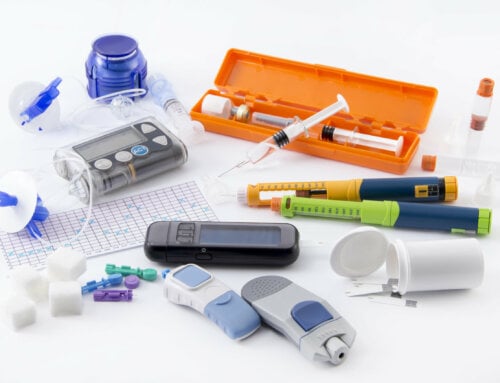Pre-diabetes means you blood sugar levels are higher than normal, but not high enough to be diagnosed as diabetes. It is a serious warning that you are at an increased risk of developing type 2 diabetes. If the doctor diagnosed you with pre-diabetes, you need to start getting healthier today.
- In the past, pre-diabetes was referred to as impaired fasting glucose or impaired glucose tolerance. Nearly half the people who have pre-diabetes develop diabetes type 2 within just 10 years. Pre-diabetes can have other negative effects on your health including high blood pressure and an increased risk of heart and blood vessel disease. Now is the time to start developing healthy habits to ward off the possibility of developing diabetes type 2 .
- There are certain risk factors for developing pre-diabetes. You are more likely to get it if members of your family have diabetes. Latinos, African Americans and Native Americans are more prone to getting it. Other risk factors including being overweight, having high cholesterol and blood pressure as well as a lack of physical activity. Women who had high blood glucose when pregnant, referred to as gestational diabetes, are more likely to get pre-diabetes as well as women who gave birth to a baby that weighed over 10 pounds.
- Symptoms of pre-diabetes may include frequent urination, extreme thirst and fatigue as well as blurred vision. You may have no symptoms at all. To find out if you have pre-diabetes, ask your doctor about completing certain tests. One is the fasting glucose blood test (FPG) and another is the oral glucose tolerance test (OGTT). Both tests require fasting overnight with no liquids or foods for 8 hours prior to the test. You are testing once with the FPG and twice with the OGTT. The second part of the OGTT involves drinking 75 gms of a sweet liquid then your blood glucose is tested 2 hours later. A pre-diabetes blood test that does not involve fasting is the glycohemoglobin A1C.
- If you have pre-diabetes, losing just 5-10 percent of your total body weight can reduce your risks significantly. Limit your daily calories and lower the fat and sodium in your diet. Eat whole grains, lean meats and fish as well as low-fat dairy with plenty of vegetables and fruit. Eat three small meals and two light snacks each day to avoid blood sugar surges. Avoid preserved, packaged and fast foods that are typically high in sugar and sodium.
- Reduce the stress in your life. Stress causes your heart rate to increase and triggers your blood sugar levels to soar. Start the day with a walk, meditation or yoga. If you start to feel anxious, take three slow and deep breaths before you continue daily activities. Try to get a day of rest and fun with family and friends each week to help you unwind.
- Find the sleep sweet spot to combat diabetes. A Yale University study revealed sleeping less than 6 hours each night can double the risk of developing diabetes. However, sleeping more than 8 hours can triple the odds of getting the disease. The key is to get 7 to 8 hours of sleep each night. Sleeping too long or too little puts your nervous system on alert and can interfere with the hormones that naturally regulate your blood sugar levels.
- Boost your physical activity. Start by taking a walk for thirty minutes each day. Take the stairs instead of the elevator and walk instead of driving. Play with your children and do work in the yard. Join a local gym or enroll in classes at the local community center. Consider Zumba, dancing or aerobics. The key is to keep moving to burn calories, build muscle and improve your cardiovascular health. Talk to your doctor before starting any physical fitness plan.
- Quit unhealthy habits such as smoking or drinking excessive alcohol. Talk to your doctor about risk factors for heart disease and stroke. Ask about treatment options. It can help to work with a diabetes nurse practitioner, nutritionist and/or physical therapist. Get a blood pressure monitor to keep track of the condition of your heart at home. Report any irregularities to your doctor immediately.
About 25 percent of Americans are believed to have pre-diabetes. A diagnosis of pre-diabetes does not mean you will definitely develop diabetes. Be proactive and start improving your health habits today to help ward off this disease.






Leave A Comment